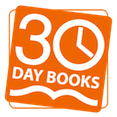What is an Indie Author? Understanding Independent Publishing
The literary landscape has undergone a significant transformation in recent years, with indie authors breaking barriers and capturing the imagination of readers worldwide. But what exactly is an indie author, and how do they differ from their traditionally published counterparts? In this blog post, we will delve into the captivating world of independent publishing, exploring the unique opportunities and challenges faced by indie authors. Let’s answer the burning question: what is an indie author?
The birth of indie authors
Independent publishing has a rich and storied history, with roots that can be traced back centuries. However, the birth of the modern indie author can be linked to the advent of digital technology and the internet. Let’s take a quick look at the key moments that have shaped the landscape of indie publishing.
The rise of print-on-demand (POD)
In the late 1990s and early 2000s, print-on-demand technology revolutionized the publishing industry by allowing authors to print and distribute their books without the need for a traditional publisher. This development opened doors for many aspiring authors who struggled to find representation or couldn’t afford the costs of vanity publishing.
The emergence of e-books
The introduction of e-readers like the Amazon Kindle in 2007 further democratized the publishing process. E-books made it possible for authors to bypass the traditional gatekeepers and reach readers directly, leading to an explosion of independently published titles.
The rise of self-publishing platforms
As e-books gained popularity, platforms like Amazon Kindle Direct Publishing (KDP), Smashwords, and Draft2Digital made it easier than ever for indie authors to publish and distribute their work. These platforms streamlined the process and provided authors with tools and resources to help them find success in the competitive literary market.
The impact of social media
Social media has played a crucial role in the growth of indie authors by providing them with an accessible platform to connect with readers, share their work, and build their author brand. Platforms like Facebook, Twitter, and Instagram have given indie authors the ability to engage with their audience and expand their reach beyond traditional channels.
These key moments have shaped the world of indie publishing, providing aspiring authors with the tools and resources needed to take control of their literary destinies. With a more level playing field, talented indie authors have risen to prominence, proving that great stories can come from anywhere, not just the traditional publishing houses.
Defining an Indie Author
Now that we’ve explored the history of indie publishing, it’s time to answer the main question: what is an indie author? An indie (independent) author is a writer who takes complete control of their publishing journey. This means they are responsible for every aspect of the process, from writing and editing to cover design, formatting, marketing, and distribution. In contrast, traditionally published authors work with a publishing house that handles these aspects for them.
Key aspects of independent publishing include:
- Creative control: Indie authors retain complete control over their work, including the content, cover design, and pricing. This allows them to make decisions based on their artistic vision and target audience, without external pressures from publishers.
- Financial independence: Indie authors often earn higher royalties compared to their traditionally published counterparts, as they don’t have to share profits with a publisher. With platforms like Amazon KDP and Smashwords, authors can earn up to 70% of the revenue from their book sales.
- Direct connection with readers: Indie authors can build and maintain a direct relationship with their readers, which can lead to a loyal fanbase and increased word-of-mouth marketing. This personal connection helps authors gain valuable feedback and develop a better understanding of their audience’s preferences.
- Flexibility and adaptability: Indie authors have the freedom to experiment with different writing styles, genres, and marketing strategies. They can also adapt quickly to market trends and reader feedback, allowing them to stay ahead of the curve in a rapidly evolving industry.
In summary, an indie author is a writer who takes control of their publishing journey, embracing the freedom and responsibility that comes with it. They navigate the challenges of the publishing process independently, often relying on a combination of self-taught skills and support from fellow indie authors or freelancers. As a result, indie authors can bring their unique stories to life without the constraints of traditional publishing.
The perks of being an indie author
Independent publishing offers numerous benefits for authors who choose to embark on this path. Let’s explore some of the most significant perks of being an indie author:
Creative control
As an indie author, you maintain complete control over your work, from the story itself to the cover design and formatting. This allows you to create a cohesive vision for your book without interference from publishers, ensuring your creative voice remains authentic and true to your intentions.
Higher royalties
Indie authors often enjoy higher royalties than traditionally published authors. By self-publishing, you can bypass the need to share profits with a publisher, earning a larger percentage of the revenue from your book sales. Platforms like Amazon KDP and Smashwords offer royalties of up to 70%, providing indie authors with a potentially lucrative income stream.
Faster time-to-market
The traditional publishing process can be slow, often taking years from manuscript submission to a book’s release. As an indie author, you have the ability to publish your work as soon as it’s ready, allowing you to get your stories into the hands of readers much more quickly.
Flexibility in pricing and promotion
Indie authors can experiment with pricing strategies and promotional efforts, adapting to the market and reader preferences. This flexibility allows you to find the most effective approach for your specific genre and target audience, helping to maximize your book’s success.
Niche market opportunities
Indie authors can target niche markets and explore unconventional genres that may not be as viable in traditional publishing. By catering to specific reader interests, indie authors can build a dedicated fanbase and stand out in a crowded literary landscape.
Personal connection with readers
Indie authors can build strong relationships with their readers through social media, newsletters, and author websites. This direct connection helps you gain valuable feedback, foster reader loyalty, and create a community around your work.
Challenges faced by indie authors
While independent publishing offers numerous benefits, self published authors also face a unique set of challenges. Understanding these hurdles can help aspiring authors prepare for the journey ahead and navigate the world of indie publishing more effectively.
Marketing and promotion
Without the backing of a traditional publisher, indie authors are responsible for promoting their work and building their author platform. This can be a daunting task, requiring a significant investment of time and effort in learning marketing strategies, networking, and engaging with readers on social media.
Editing and proofreading
Indie authors must ensure their work is polished and professionally edited before publication. This can be a challenge, as hiring professional editors can be costly. However, there are resources available, such as critique groups and beta readers, to help authors improve their manuscripts before seeking professional assistance.
Cover design and formatting
A professional and eye-catching book cover is essential for attracting readers, while proper formatting ensures a seamless reading experience. Indie authors must either learn these skills themselves or hire freelancers to help with these tasks, adding to the overall cost of self-publishing.
Distribution and visibility
While platforms like Amazon KDP and Smashwords offer indie authors the ability to distribute their work globally, the sheer volume of books published can make it difficult for new authors to stand out. Developing an effective marketing strategy and leveraging promotional tools can help indie authors increase their visibility and reach a wider audience.
Time management
Juggling the many responsibilities of being an indie author, from writing and editing to marketing and networking, can be challenging. Effective time management and prioritization are crucial to ensure a balanced and sustainable approach to independent publishing.
Financial investment
While indie authors have the potential to earn higher royalties, they must also bear the initial costs of publishing, including editing, cover design, and marketing. This can be a financial burden, but investing in a high-quality product can significantly impact a book’s success.
The Future of Indie Publishing
The world of indie publishing has experienced tremendous growth over the past two decades, and its future looks even more promising. With technological advancements and an ever-evolving literary landscape, the opportunities for indie authors continue to expand. Here are some predictions and trends that are likely to shape the future of indie publishing:
Continued growth in e-books and audiobooks
As digital reading and listening habits continue to grow, indie authors will have even more opportunities to reach readers through e-books and audiobooks. The increasing popularity of subscription services like Kindle Unlimited and Audible will also provide additional revenue streams for authors.
Improved discoverability through AI and algorithms
As artificial intelligence and algorithms become more sophisticated, it will become easier for readers to discover books that align with their interests. This will help indie authors reach their target audience more effectively and efficiently.
Emergence of new publishing tools and platforms
The growth of indie publishing will continue to drive the development of new tools and platforms to help authors streamline the publishing process, from writing and editing to marketing and distribution.
Increased collaboration and community building
As the indie author community grows, we can expect to see more collaboration and support among authors, such as co-writing projects, joint promotions, and the sharing of resources and expertise.
Greater emphasis on author branding and marketing
As competition increases, indie authors will need to put even more effort into building their author brand and honing their marketing skills. This will involve embracing new strategies and staying current with the latest trends in digital marketing and social media.
Increasing acceptance and recognition of indie authors
As more indie authors achieve success and garner critical acclaim, the stigma surrounding self-publishing will continue to diminish. This will lead to greater acceptance and recognition of indie authors within the broader literary community.
The future of indie publishing is bright, offering aspiring authors limitless opportunities to share their stories with the world. By embracing the challenges and staying attuned to the evolving landscape, indie authors can continue to flourish and redefine the boundaries of the publishing industry.

